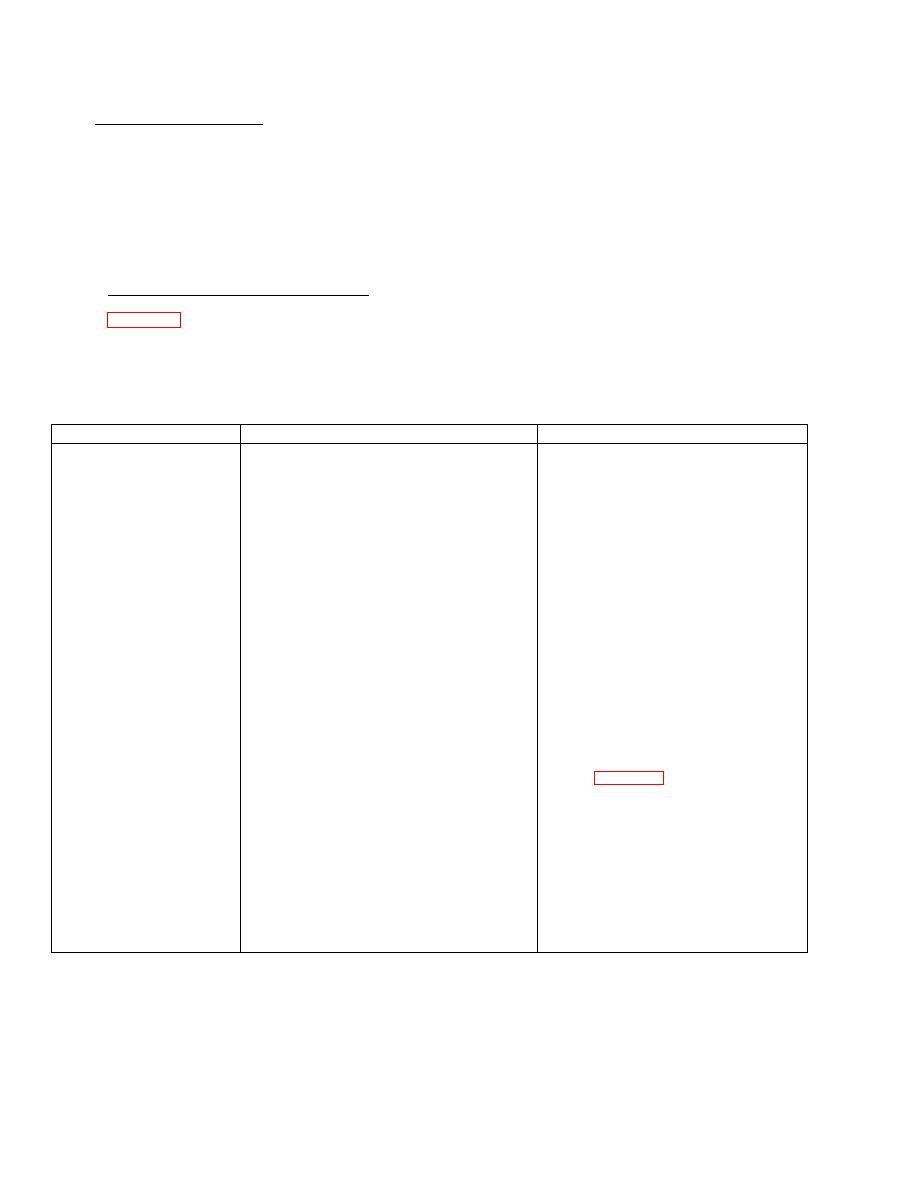
TM 10-5410-228-10
3.8
GENERAL - Continued.
h. Switching to the alternate power source if a problem or alarm is detected which prevents or impacts
system operation such as the Environmental Control Unit (ECU) ceases to function, indicated by a
reduction in noise.
i.
Shutting down the system if switching the CBPS to the alternate power source does not rectify the
malfunction or the malfunction is deemed to be a safety issue or detrimental to the equipment.
j.
Verifying that procedures were followed correctly.
3.8.1
Rear Control Panel Alarm Indicators.
Table 3-1 shows CBPS alarm indicators, possible causes and what action is required to remedy the
problem.
Table 3-1. Rear Control Panel Alarm Indicators
ALARM/INDICATOR
CAUSE
ACTION REQUIRED
DANGER HYD OIL
HYD OVERHEAT lights (red) when
Turn NBC FAN switch to off, when
possible.
TEMP indicator
hydraulic fluid temperature reaches
230 degrees Fahrenheit. An internal
Ensure that ECU doors and covers
switch causes hydraulic system to self
are closed.
cool the fluid.
Ensure that condenser coil inlet and
fan outlet screens are free from debris
or obstructions.
Allow hydraulic system to self cool.
NBC ALARM
Audible alarm sounds whenever the
Refer to Operator Troubleshooting
shelter air pressure is below the
Procedures, Malfunction No. 7.
minimum set point of 0.5 iwg.
RIB INFLATION
When air beam inflation blower fan is
No action required unless the LOW
PRESSURE indicator
turned on, the LOW indicator lights
indicator light remains lit. If the
(LOW)
(red) and remains lit until the
NORMAL indicator does not light
pressure passes beyond the low
(white) or will not remain lit, contact
pressure set point of 1.5 psi.
unit maintenance to replace air
beams.
CHEMICAL SENSOR
CHEM SENSOR IN ALARM lights
Refer to para 2.25.
alarm
(red) to show that a chemical threat
has been detected.
ENGINE COOLANT
TEMP HIGH lights (red) when the
Switch to auxiliary power supply.
Shut ECV engine off.
TEMP indicator
temperature of the ECV engine coolant
is too high.
Check ECV engine coolant level per
TM 9-2320-387-10.
NBC AIRFLOW
LOW NBC AIR FLOW lights (yellow)
Refer to Operator Troubleshooting
when shelter pressure falls below 0.3
Procedures, Malfunction No. 7.
iwg.
3-4


